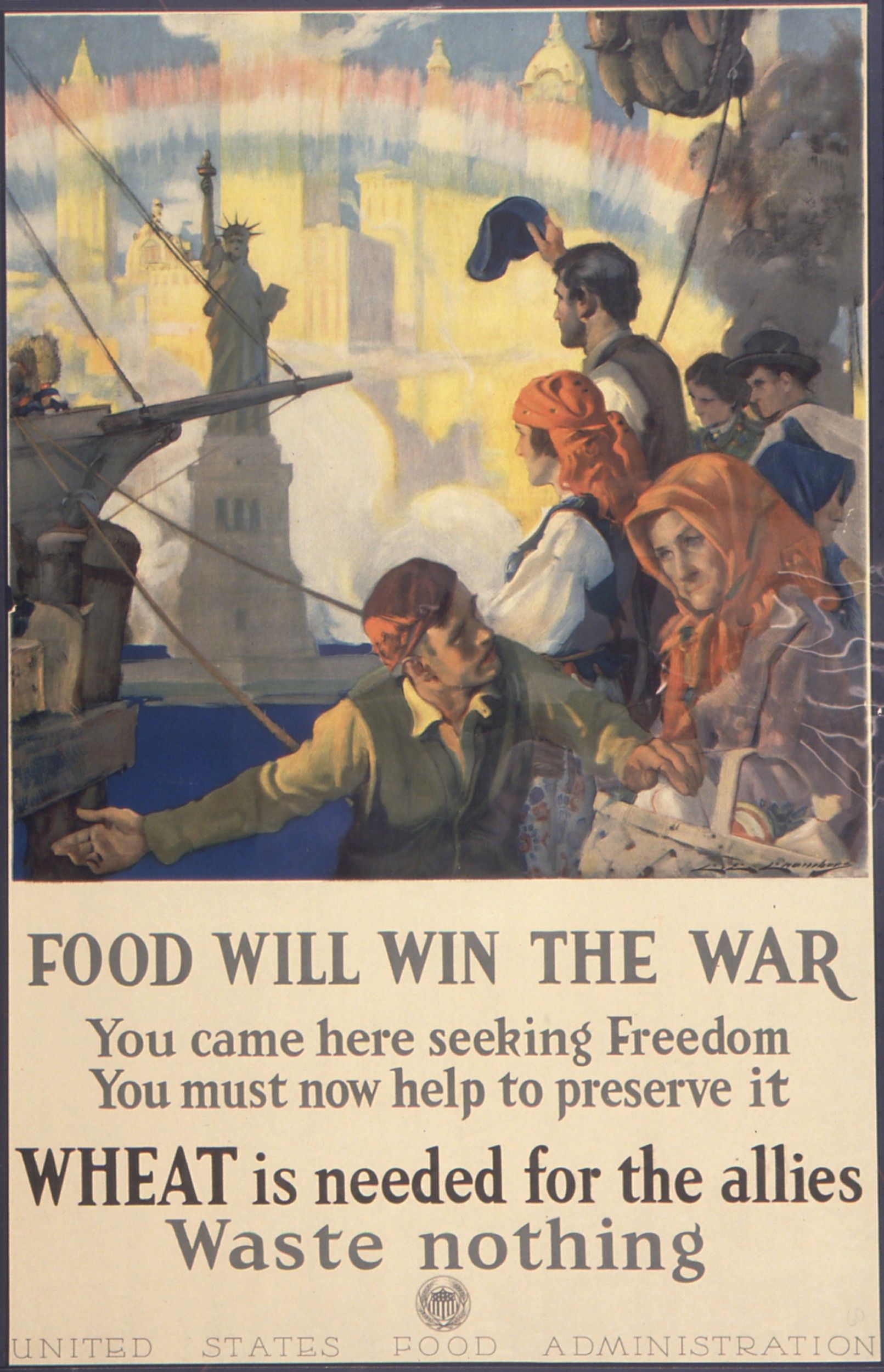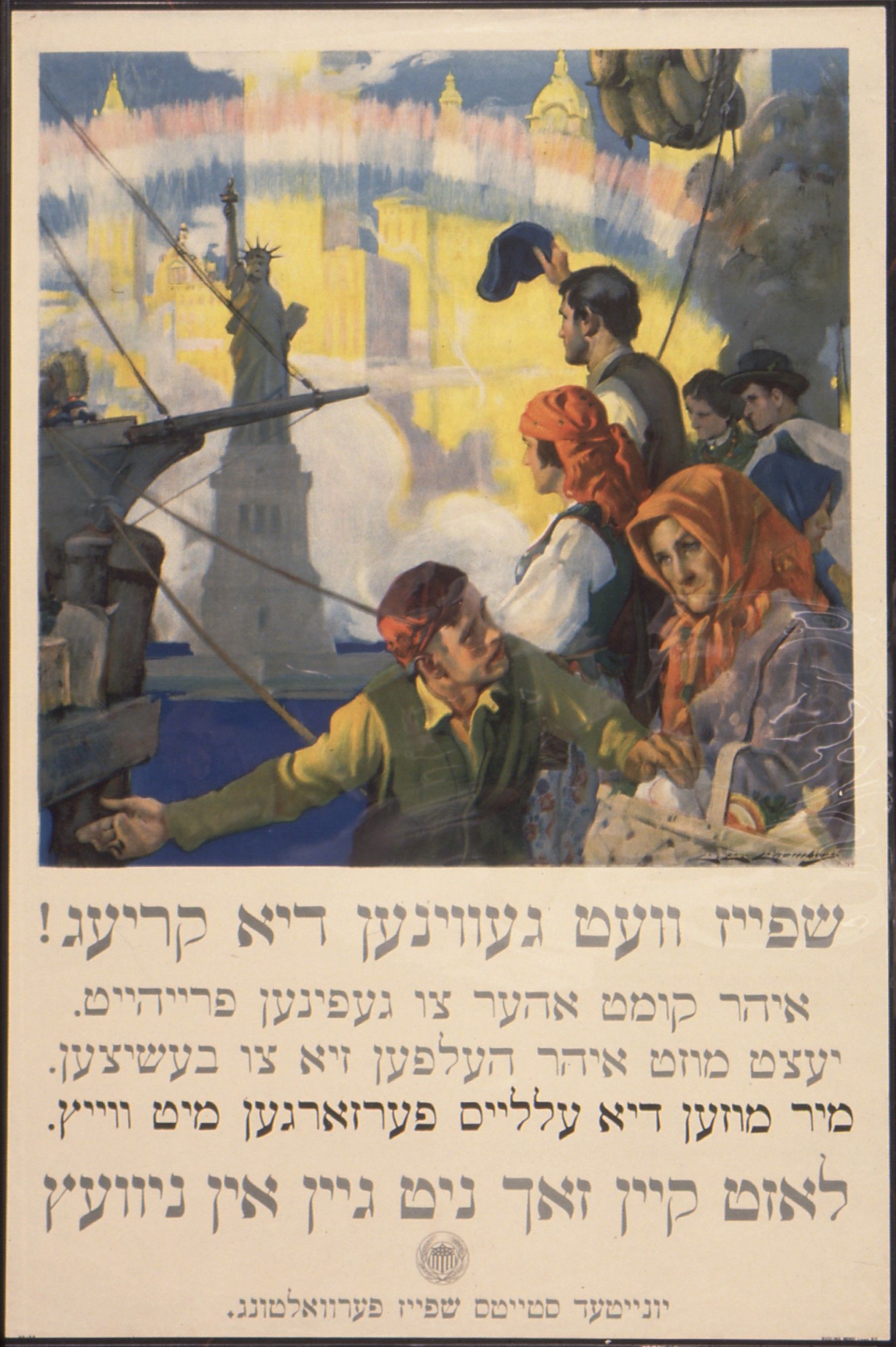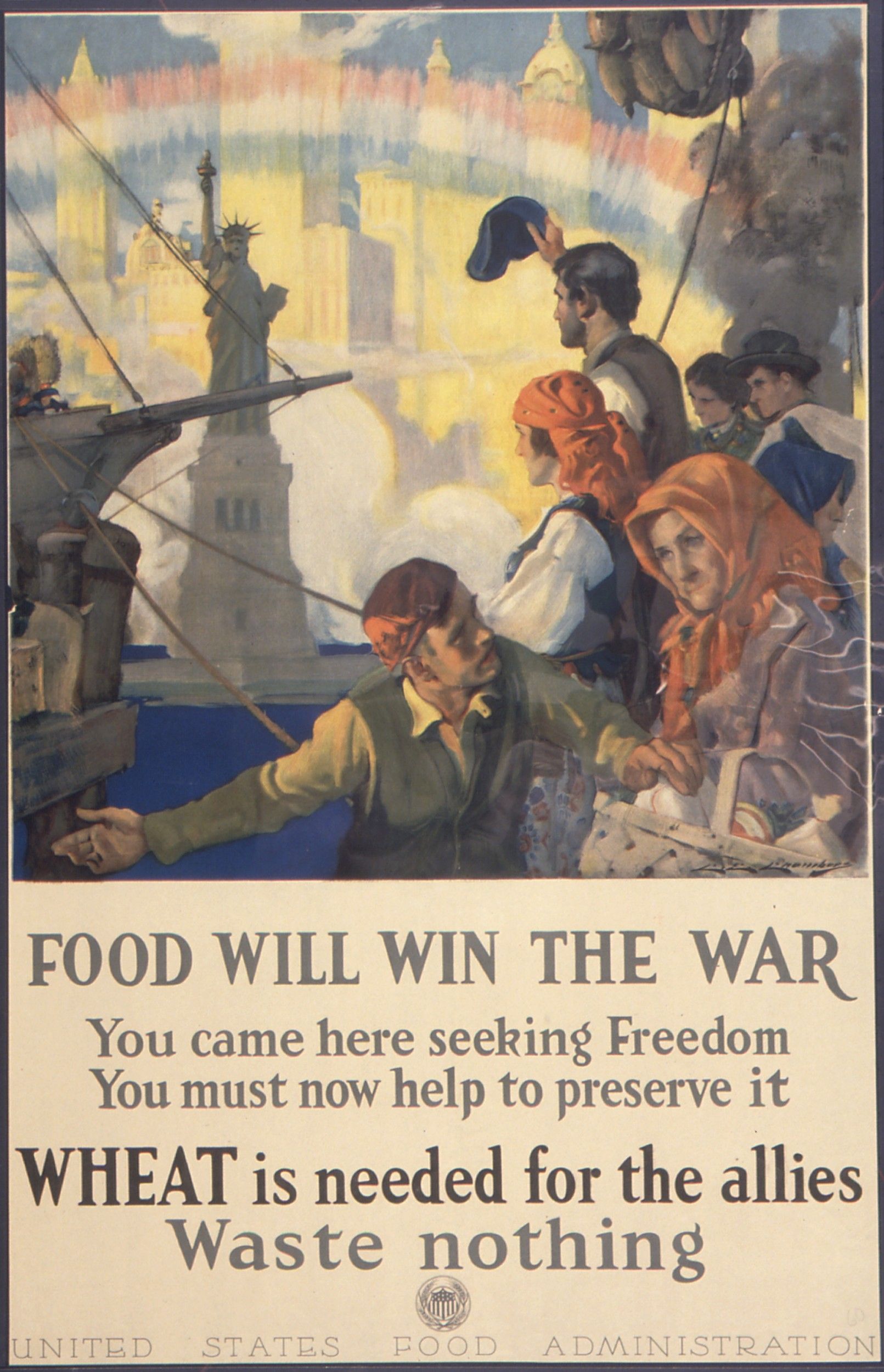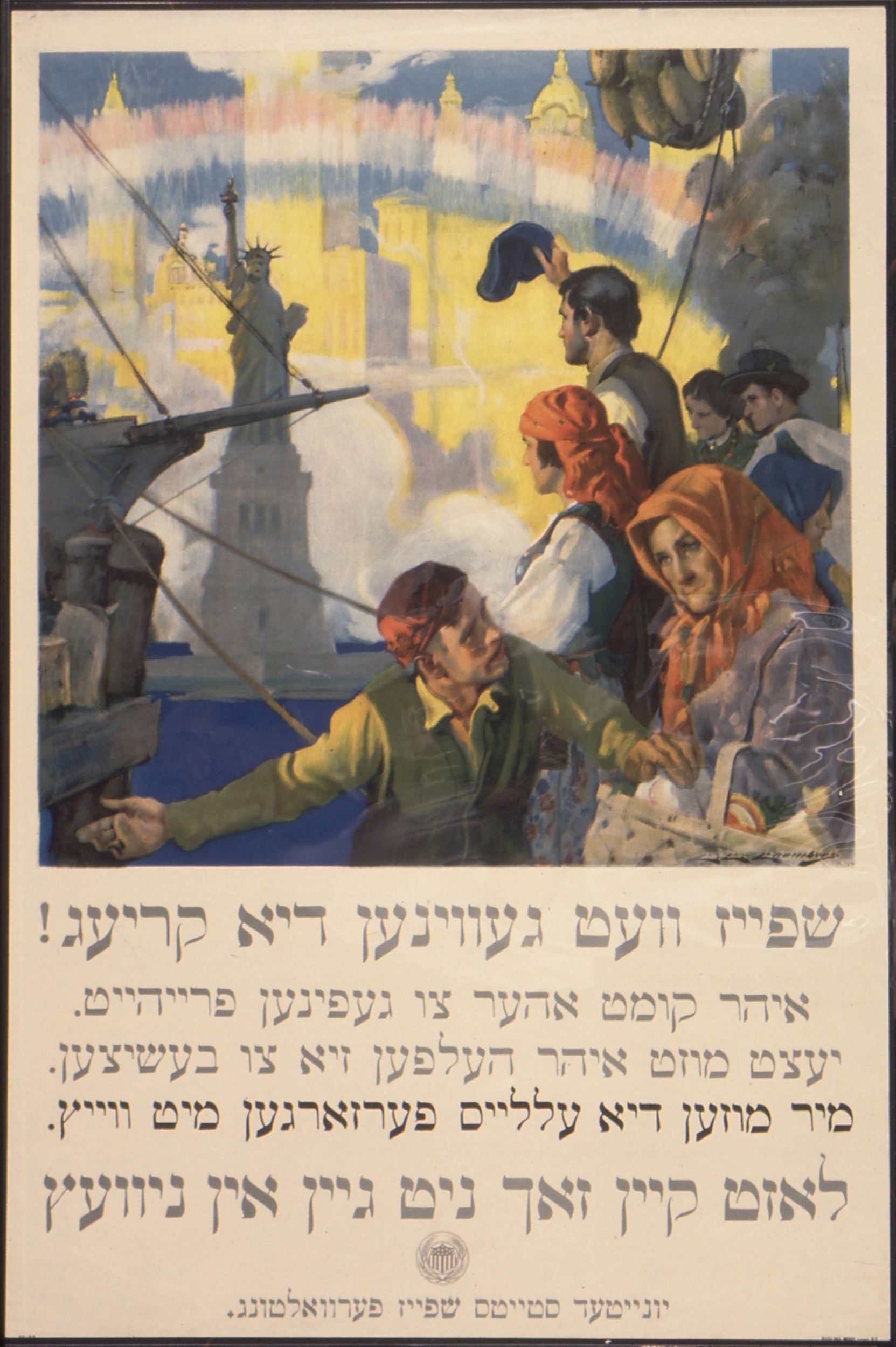WWI Food Conservation Posters
Focusing on Details: Compare and Contrast
All documents and text associated with this activity are printed below, followed by a worksheet for student responses.Name:
Class:
Class:
Worksheet
WWI Food Conservation Posters
Focusing on Details: Compare and Contrast
Examine the documents included in this activity and write your response in the space provided.

This 1917 poster was printed in several languages, including Yiddish (on right) and Italian.
- Why might the U. S. Food Administration have created posters in different languages?
- What would the audience for each have in common?
- How do you think they differed?
- What do you see that might appeal to different cultures?
- What patriotic symbols do you see?
Your Response
1
Activity Element
Page 1

2
Activity Element
Page 1

Conclusion
WWI Food Conservation Posters
Focusing on Details: Compare and Contrast
- What emotions or feelings is the poster designer trying to create in the audience?
- Do you think this would be an effective way to get Americans to contribute to the war effort? Why or why not?
Your Response
Document
Food will win the war. You came here seeking Freedom. You must now help to preserve it. WHEAT is needed for the allies. Waste nothing.
ca. 1917
The newly created United States Food Administration, headed by Herbert Hoover during World War I, regulated the supply, distribution, and conservation of food during the war. It’s goal was to save enough to send surplus food to the Allies. This poster by Charles E. Chambers says "Food will win the war. You came here seeking Freedom. You must now help to preserve it. WHEAT is needed for the allies. Waste nothing." The poster was printed in several languages, including Yiddish and Italian. It targeted immigrants, combining patriotic symbols to urge the conservation of wheat.
Transcript
Food will win the warYou came here seeking Freedom
You must now help to preserve it
WHEAT is needed for the allies
Waste nothing
United States Food Administration
This primary source comes from the Records of the U.S. Food Administration.
National Archives Identifier: 512499
Full Citation: Poster 4-P-60; Food will win the war. You came here seeking Freedom. You must now help to preserve it. WHEAT is needed for the allies. Waste nothing.; ca. 1917 ; World War I Posters, 1917 - 1919; Records of the U.S. Food Administration, ; National Archives at College Park, College Park, MD. [Online Version, https://docsteach.org/documents/document/food-will-win-the-war-english, April 25, 2024]Food will win the war. You came here seeking Freedom. You must now help to preserve it. WHEAT is needed for the allies. Waste nothing.
Page 1

Document
Food will Win the War. You came here seeking freedom. You must now help to preserve it. Wheat is needed for the Allies. Waste Nothing.
ca. 1917 - 1919
The newly created United States Food Administration, headed by Herbert Hoover during World War I, regulated the supply, distribution, and conservation of food during the war. It’s goal was to save enough to send surplus food to the Allies. This poster by Charles E. Chambers says "Food will win the war. You came here seeking Freedom. You must now help to preserve it. WHEAT is needed for the allies. Waste nothing." The poster was printed in several languages, including Yiddish, Italian, and English. It targeted immigrants, combining patriotic symbols to urge the conservation of wheat.
This primary source comes from the Records of the U.S. Food Administration.
National Archives Identifier: 512541
Full Citation: Poster 4-P-102; Food will Win the War. You came here seeking freedom. You must now help to preserve it. Wheat is needed for the Allies. Waste Nothing.; ca. 1917 - 1919; World War I Posters, 1917 - 1919; Records of the U.S. Food Administration, ; National Archives at College Park, College Park, MD. [Online Version, https://docsteach.org/documents/document/food-will-win-the-war-yiddish, April 25, 2024]Food will Win the War. You came here seeking freedom. You must now help to preserve it. Wheat is needed for the Allies. Waste Nothing.
Page 1

